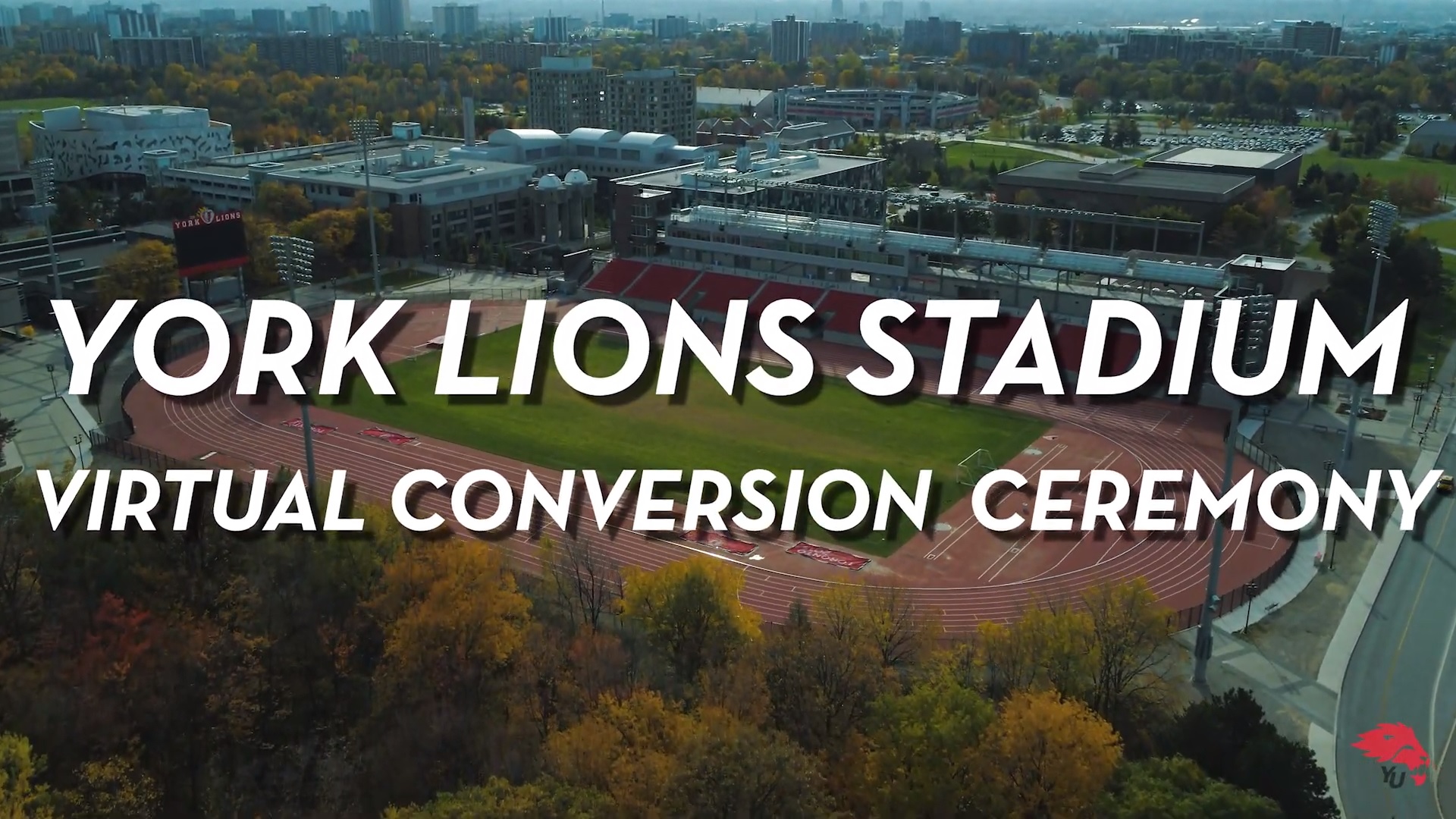On Thursday, September 17 the York Lions held a “virtual conversion ceremony.” A video was posted to York Lions social media officially announcing the transformation of the York Lions Stadium (YLS) to a multi-functional facility with an air dome, which will be used for a quarter of the year.
The construction is slated to be completed by spring of 2021 and, according to Executive Director of Athletics & Recreation Jennifer Myers, this is ahead of schedule.
“The COVID-19 shutdown presented a unique opportunity to start early on the project while the university was closed,” Myers says.
Myers adds that although the pandemic allowed the project to start early, it has been in the works for approximately two years.
The project will add 825 hours of programming during the winter, allowing for a more diverse usage of the stadium, whereas previously its only purpose was a track and field arena.
The ceremony emphasized the variety of ways that York is planning on using the revamped stadium for non-sport activities.
In the virtual ceremony video, York President and Vice-Chancellor Rhonda Lenton, stated the new facility “will not only improve the athletic and recreational activities of our student-athletes and the York community, but it will also create new and innovative ways for us to collaborate and engage the broader Greater Toronto Area community.”
It is a difficult decision to remove the track, but the reality is the track team only utilizes the stadium track for approximately one month once the fall semester begins.
Regarding YLS, Myers says the loss is unfortunate but the team has other facilities they use to train.
“The track team has always utilized the Toronto Track and Field Centre (TTFC) which is operated by the city, but to which we pay half the operating cost in a shared agreement,” Myers states.
“It is a difficult decision to remove the track, but the reality is the track team only utilizes the stadium track for approximately one month once the fall semester begins, then they move inside to the TTFC, where we are already paying to use. We will be working closely with the TTFC to ensure that the needs of our track program are captured in their usage and scheduling,” Myers adds.
The university attempted to find a different solution to accommodate the track and field team, but no option was financially feasible. According to Myers, the university “went to great lengths to find alternative solutions including offering to build a new track.”
This solution “was ultimately rejected by the board that oversees the funding attached to the legacy agreement for the facility.”
Myers adds the facility is funded through student fees and revenue generation from rentals.
“Limiting the use of the facility to a single group was not beneficial to the broader student population,” Myers says. “In the end we were not able to reconcile the large cost of operating a single use facility with keeping the track intact.”


